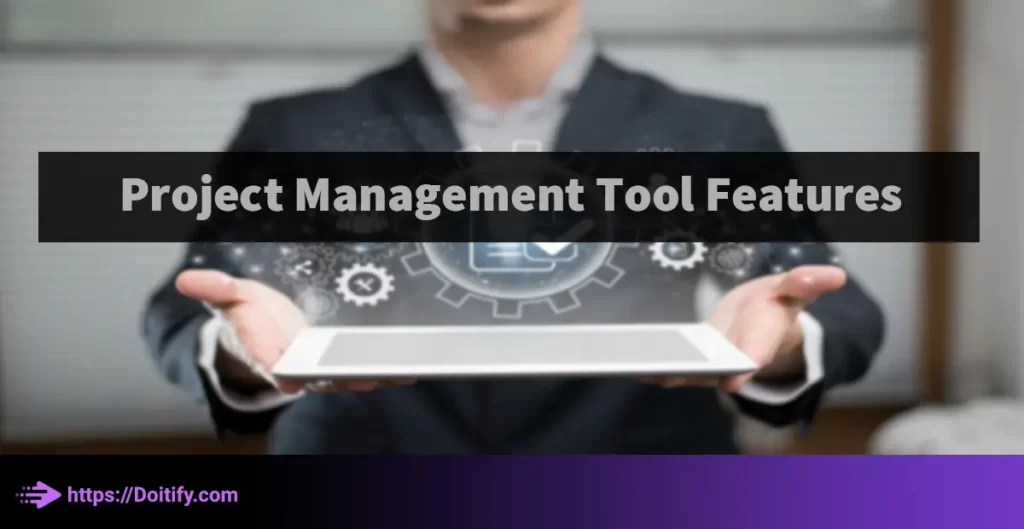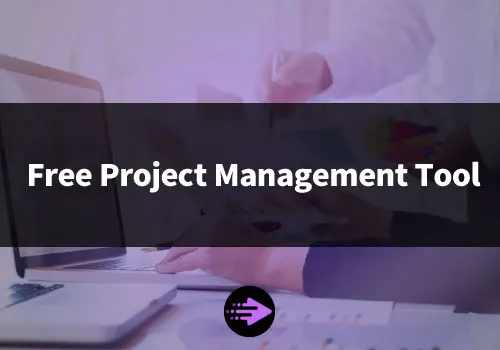Project management tools equipped with the right features are crucial for teams handling complex projects that involve coordination across multiple workstreams and tight deadlines. These tools provide specialized project management tool features that help professionals streamline workflows and drive collaboration throughout the project lifecycle, from planning to execution.
By leveraging core features like task management, resource allocation, reporting, documentation and scheduling, project teams are able to successfully tackle intricate initiatives in a seamless, centralized manner. Selecting the ideal project management tool based on your specific project needs and the type of features available is key to maximizing productivity and minimizing delays.
This guide seeks to explore the fundamental project management tool features found across leading tools and how they support management of initiatives. It will provide an overview of popular project management tools on the market while breaking down essential capabilities to look for during evaluation. The aim is to help project managers and their teams identify the software with the right mix of features to supercharge their efforts. Let’s start by examining some top project management tools features and their signature features.
Table of Contents

Core Features For Successful Project Management
Task Management
One of the most important project management tool features is task management. The ability to easily create, organize, and assign tasks is critical for any project team. Most tools allow users to set up customized task fields to track key details like status, assignee, due date, notes, attachments and more. This level of customization ensures teams are capturing all necessary information to keep projects moving forward in an efficient manner.
In addition, tasks should be quick and simple to generate. No one wants to spend unnecessary time setting up basic to-dos. Leading tools understand this and allow tasks to be built rapidly through intuitive interfaces and predefined field templates. Some also offer automated features like recurring tasks to copy obligations that happen routinely on a project. Streamlined task creation is key to maintaining workflow.
Another core feature is resource management. This generally refers to assigning team members to tasks and tracking their availability and workload over the planned schedule. A strong project management tool will integrate capabilities like assigning “owners” to tasks when they are created and allotting estimated time commitments. This helps project managers comprehensively see volunteering and ensure no over allocation of duties.
Interactive workload heatmaps or calendars are helpful for this. They provide a real-time snapshot of resources for planning future work. Additional details like scheduled vacation time further prevent bottlenecks. Advanced features may allow demand forecasts to balance resource load. Overall, effective resource management is vital for maintaining smooth team operations and completing tasks on budget and on schedule.
We have been written about Project Management Software in another article.
Resource Management
When managing a project with multiple interdependent components and deadlines, effectively allocating staff resources is vital but can often be challenging to do manually. Project management tools make the process much more seamless through integrated assignment and workload tracking features.
Most allow project managers to directly tie team members to individual tasks at the time of creation. Dropdown menus of existing employee profiles mean assignments are quick to designate. Just as important is estimating task durations which the software then uses to calculate anticipated work hours over the planned schedule.
Workload heatmaps provide a colorful visualization of resource capacity over time. With a quick glance, managers can identify potential bottlenecks or over-allocation issues. Some advanced tools take this further with demand forecasting, balancing assignments against factors like expected vacation days to recommend optimized distributions.
No one wants to over-task their best people. With tools, it’s simple to track current and projected workload. Managers gain confidence that staffing is appropriately distributed to complete the project on budget while avoiding burnout. Team members stay informed of their commitments via dashboard previews. Overall, build-in assignment and load monitoring save valuable time in coordinating human resources.
In combination with strong communication features, resource optimization helps virtual teams work seamlessly across distances. Project managers can sleep well knowing their indispensable personnel are set up for success.
We have been written about CRM And Project Management Tool in another article.
Communication
Open communication is essential for any collaborative effort. The best project management tools acknowledge this and facilitate cooperation through embedded features that promote discussion and information dissemination. Integrated chat channels are quite valuable in this regard, allowing quick conversations, questions, and real-time coordination across a distributed project team no matter where members are located.
In addition to chat, robust file sharing is key. Complex assignments often demand collective document editing and feedback. Rather than routing files externally via email, a central repository within the project management platform prevents version control issues and keeps all documentation readily accessible. Team members can simply upload new drafts and maintain comments.
Taking collaboration further, some tools offer video conferencing. Nothing beats face-to-face discussion for solving problems creatively. With members in various time zones, virtual meetings provide the next best alternative for discussions requiring a high level of engagement.
By prioritizing functionalities that make communiation seamless, these types of project management tools foster the cooperative environment critical to any project’s success. Teams are able to maintain close coordination regardless of physical proximity.
We have been written about Project Management Toolkit in another article.
Reporting
Actionable data is paramount for effective decision making over the course of a project. Advanced reporting capabilities allow teams to access real-time metrics and evaluate progress objectively. Integrated dashboards with modular widgets presenting key performance indicators keep stakeholders apprised of the overall project health at a glance.
Furthermore, most reputable tools enable report customization. Users can configure exactly which data parameters appear – like task completion rates, budgets vs. costs, resource usage, delays. Enhanced reporting fulfills an project management tool’s purpose of providing transparency. Executive leadership gain strategic insights, while project managers can pinpoint issues to course-correct as needed.
Together, features like task tracking, resource planning, strong communication channels, and data analytics empower project teams. They represent fundamental functions for any project management tool aimed at streamlining collaboration and driving results.

We have been written about Project Management Software Benefits in another article.
Essential Project Management Tool Functions
Scheduling
Developing a master project schedule is at the core of any project plan. While spreadsheets can suffice for simple tasks, advanced tools provide dedicated scheduling features that streamline dependency linkage and engaging visualization.
Most allow scheduling via drag-and-drop Gantt chart creation direct in the interface. Tasks are simply added and arranged left to right by due dates. Where one assignment relies on the completion of another, dependencies can be drawn with intuitive clicks. The software then calculates accurate start/end dates by propagating backwards and forwards.
Many also facilitate effort estimation in hours or story points to set the work baseline. Once fleshed out, the schedule provides stakeholders a clear roadmap of deliverables. Contemporary tools take this further by integrating weather updates pushed from task tracking. Managers gain real-time schedule health insights to quickly identify variances requiring attention.
Overall, comprehensive scheduling functionality ensures all tasks, milestones, and dependencies are properly integrated into a single source of truth. Teams stay aligned on project rhythm and priorities.
We have been written about Project Management Tool With Calendar in another article.
Budgeting
Defining a clear budget is essential for any project to remain financially on track. Advanced project management tools provide dedicated features to simplify cost tracking against the planned expenditure baseline.
When setting up a project, it’s easy to attach estimated dollar values to each task. Many platforms even integrate standard cost rates based on task types, locations, or team member roles to streamline budget modeling. Once fleshed out, the baseline budget acts as an important north star throughout execution.
Actual spending is then measured against this. Receipts or timesheets are simply uploaded to assign expenses to the correct tasks. Roll-up reports compare budgeted vs. real costs at both the task and overall project level. Managers can quickly see where they are over or underrunning to make adjustments proactively.
Budget visualization tools like burn-up and burn-down charts also help communicate fiscal health. With costs updated in real-time, the budget remains a living document adapting alongside the work. Executives gain confidence around cost performance and risks of going over are minimized.
Integrating budgeting functionality ensures projects remain financially prudent in addition to timely and high quality. It’s an essential part of maintaining efficient resource usage and stakeholder approval.
We have been written about Free Project Management Tools in another article.
Documentation
Effective documentation is vital for keeping all team members and stakeholders informed, providing records of important decisions, and maintaining institutional knowledge that can transfer across the inevitable changes to project teams. Yet documentation is often one of the first things to fall by the wayside if not properly supported.
Modern project management tool features acknowledge this challenge by incorporating powerful document management systems. Rather than dealing with scattered file shares and emails, all project documentation such as meeting minutes, design specs, contracts and more have a centralized home.
Team members can easily upload latest versions of living documents, while maintaining revision history. Advanced features include check-in/check-out controls and commenting to facilitate collaborative drafting. Auto-tagging helps organize documentation by topic or category for simple searching and retrieval as needs arise throughout the project lifecycle and beyond.
Integrating documentation tools ensures proper records retention and knowledge transfer regardless of personnel or organizational changes. Leadership gains easy one-stop access to any information required for oversight and approvals. The result is more informed stakeholders and less re-learning of institutional lessons for all future projects.
We have been written about Project Management Tools For Freelancers in another article.
Checklist For Evaluating Project Management Tools
Ease Of Use
With countless project management tools on the market, selecting the right one can feel overwhelming. However, the top priority should simply be finding a solution that is intuitive to use on day one.
Features mean little if team adoption is low due to a clunky or convoluted interface. The best tools grasp this principle by implementing clean, logically organized dashboard views and straightforward wizards for common setups. Navigation becomes second nature within just a few projects.
Onboarding resources like guided tours and help articles help accelerate proficiency. Some tools even offer interactive demo environments for testing the waters risk-free before committing. With minimal ramp-up time, users can be productive immediately versus struggles that stall work.
Overall, ease of use sets the stage for long-term success. When a tool feels like a natural extension of existing workflows, buy-in soars and the whole team can stay focused where it matters most – execution.
We have been written about Project Management Tools For Small Teams in another article.
Customizability
While usability is essential, true power lies in customization options. Off-the-shelf software can only go so far in adapting to the complex realities of varied project types, team structures, and business processes. Leading tools acknowledge this through high configurability.
Foremost is the ability to tailor task and resource fields to capture exactly the metadata most important for each project context. Rather than generic selectors, managers can sculpt templates fitting their organizational taxonomy. Custom fields accelerate meaningful reporting.
Similarly, workflow elements like approval routing and trigger rules should accommodate uniquely defined stages. Project templating maintains process consistency while streams vary between initiatives.
Some platforms take customization further through no-code workflow builders. These enable truly bespoke step definitions and conditional logic reflecting a company’s proprietary methodology. Even regulations requiring paperwork trails present no barrier.
Overall, flexibility around custom object models and processes future-proofs the investment in a project management solution. The tool adapts alongside the organization rather than hindering evolution.
We have been written about Project Management Tool Apps in another article.
Mobility
Modern distributed teams require tools optimized for mobile usage. The best solutions understand this through responsive designs and fully-featured mobile apps.
Well-executed apps duplicate almost the entire web experience on a phone or tablet. While on the go, team members can still view schedules, add tasks, capture receipts, join calls, and message colleagues. Some even facilitate offline work by syncing updates over WiFi.
Beyond apps, PWAs (Progressive Web Apps) are another approach gaining popularity. They apply app-like behaviors to web pages through features like installable icons, reliable offline access, push notifications and more.
Regardless the technology, the priority is maintaining continuous engagement from any location. Project managers gain peace of mind knowing their teams remain productive outside traditional workspaces too. With mobility support, employees feel empowered versus tethered to a single computer.
As work becomes more distributed than ever, mobility represents a minimum standard for effective project management tools. It strengthens asynchronous collaboration worldwide.
We have been written about Time Tracking Project Management Tool in another article.
Collaboration
While integrating core functions like task management and communication are table stakes, truly innovative teams demand extensibility. Open API architectures allow organizations to weave external services directly into workflow experiences.
Well-crafted APIs empower developers to automate processes through internal systems. For example, certain tools expose APIs to trigger code repositories on task creation/closure. This seamlessly links work management and deployment pipelines.
Similarly, integrations with CRM platforms populate project details during opportunity pursuit or support ticket resolution. Work avoids duplication by flowing across a connected software ecosystem.
Advanced tools even provide no-code tools like Zapier connectors for quicker integrations. Citizen integrators can assemble Automations bridging common SaaS tools without code.
Openness sets pioneer tools apart by future-proofing against disruptive technologies. As team tech stacks evolve, work management adapts in lockstep rather than acting as a siloed solution. Extensibility transforms platforms into orchestration hubs for versatile DevOps and customer-centric workflows across industries.
We have been written about Agile Project Management Tool in another article.
Conclusion
In conclusion, selecting the right project management tool features is important for streamlining work and driving success. Beyond core functions, evaluating user experience, customizability, mobility support and opportunities for broader collaboration will help choose a solution empowering teams now and in the future.
Key criteria include efficient task, resource and schedule management; real-time reporting and analytics; and strong communication channels facilitating distributed cooperation. Budgeting and documentation tools bring further transparency.
However, ease of use through intuitive interfaces optimizes adoption, while flexibility to sculpt customized objects and workflows future-proofs the investment. Organizations should also demand mobile access maintaining engagement anywhere and open APIs integrating workstreams across technical ecosystems.
When combined, an advanced project management tool features will place teams in control of their initiatives. Proper tooling relieves long-standing process pain points to instead unleash productivity. Consistently delivering projects on time, in scope and on budget becomes attainable through streamlined collaboration supported from planning through execution.
FAQs
How do I choose the best project management tool for my team?
Evaluate options based on your team size, industry, and collaboration needs. Consider ease of use, customization, integrations with other tools you use, and price. Test drive free trials of top contenders to see which interface and features are the best fit.
What are the most popular project management tools?
Some of the most widely used project management tools include Doitify, Asana, Trello, Microsoft Project, Jira, and Monday.com. These cater to a variety of team sizes and budgets while covering core functions around task tracking, reporting, scheduling and collaboration.
Can project management be done without tools?
Yes, it’s possible to coordinate projects using only basic techniques like emails, spreadsheets and documents but tools provide valuable streamlining. They centralize work, automate task tracking and reporting, and facilitate real-time team collaboration more efficiently at scale.
How do I integrate my project management tool with other apps?
Many tools expose APIs to programmatically integrate with other systems. Also look for out-of-the-box connections through Zapier, IFTTT or tools’ native app marketplaces. These allow syncing data bidirectionally without coding through automated workflows.
How do I get my team to actually use the project management tool?
Drive adoption by communicating clearly how it improves processes and helps everyone succeed. Provide training during onboarding and just-in-time help. Make participation social through activity updates. Leaders must also lead by example using it consistently for visibility and accountability.



